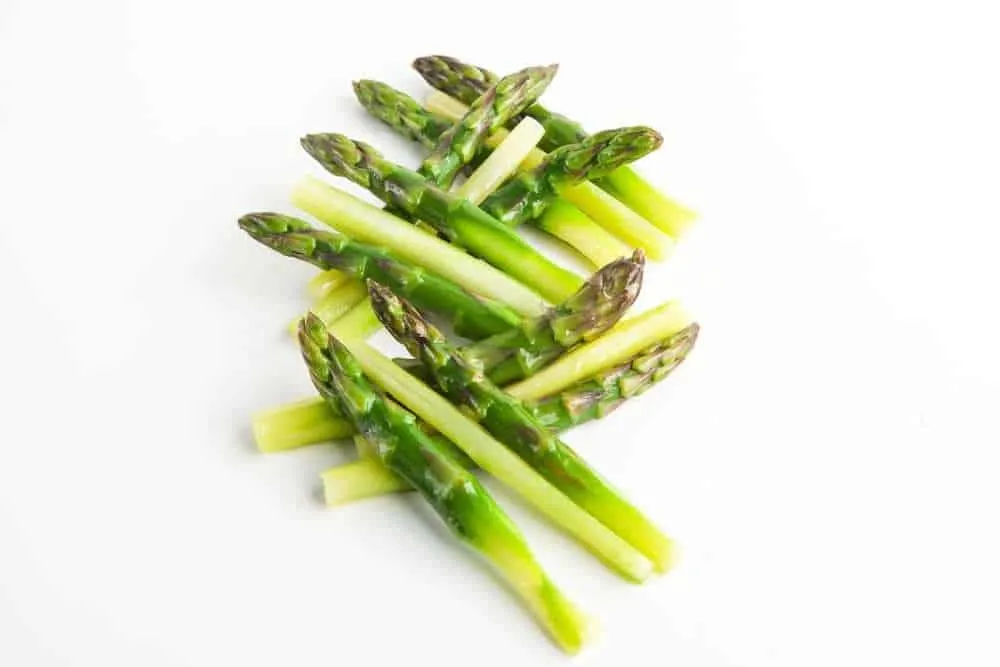Asparagus: A Great Treat For Your Dog Or A Food To Avoid?
Dogs tend to enjoy snacking on fruits and vegetables, but not all foods are right because dogs have different systems from ours.

Asparagus, In Short
Asparagus is one of the healthiest vegetables that people often enjoy eating. The amount of minerals and vitamins is high. Many people find the vegetable yummy and think of it as an excellent possible treat for a dog.
The most important thing to know about feeding your dog asparagus is that it’s not toxic. However, it would help if you kept a few things in mind, namely: avoiding feeding asparagus fern and chopping up the stalks and cooking the asparagus before feeding.
Cutting Up The Asparagus Makes A Difference
When you cut up the asparagus, one of the most important things to do is remove the asparagus fern or leaves, which, according to My Bones and Biscuits, is the toxic part of the plant.
Some of the symptoms that dogs might develop when they eat this part of the plant include diarrhea, vomiting, and severe abdominal discomfort. Seeking prompt veterinary help is recommended to address these symptoms.
Asparagus stalks are tough, but we might not realize how tough they are even for dogs. If I ever needed an indicator of how difficult a food this vegetable can be for dogs, all I needed to see was my dog using the stalks like a chew toy.
A dog might try to swallow something whole if he or she can’t chew it up properly. To avoid the scare of your life and an expensive trip to the vet, cut the asparagus into small pieces before feeding.
If you enjoy asparagus enough to grow some in your garden, make sure you have the plants fenced off. Otherwise, your curious pooch might try to sample the inedible ferns.
Another situation you need to watch for when growing asparagus is when the plants start flowering. Flowering produces red seedpods that are toxic to both dogs and people.
Should You Cook The Asparagus?
Raw asparagus can be harder for your dog to digest than you may have realized. Diarrhea, gas, and vomiting might happen when the asparagus is eaten raw. Cooking the vegetable lightly before serving can help reduce the possibility of these issues.
Steaming or boiling the asparagus is the best way to soften the vegetable. Avoid using cooking oil or butter, as either of these can cause stomach upsets.

The Nutritional Benefits
Although asparagus is something that your dog doesn’t require, there is nothing wrong with using the vegetable as a treat. However, it would be best if you were careful about how you feed it to avoid any difficulties.
Vitamins
Asparagus is high in vitamin content, including these:
- A
- B1
- B2
- B3
- B6
- C
- E
- K
Essential Nutrients
Other nutrients that your dog will get from eating asparagus include:
- Folate
- Copper
- Selenium
- Manganese
- Phosphorus
- Potassium
- Choline
- Protein
- Iron
- Zinc
- Pantothenic acid
All of these nutrients help contribute to skin and coat health, as well as healthy teeth and eyes. This combination helps keep organs healthy and increases immune system health.
One of the most important out of all the nutrients is selenium. One of the things that makes selenium so important is its ability to prevent the following conditions:
- Thyroid disease
- Cognitive decline
- Heart disease
- Cancer
Digestive Health-Related Nutrients
Asparagus is high in dietary fiber, which is essential for maintaining digestive health. One of its benefits includes encouraging regular bowel movements for dogs with constipation.
In the case of dogs with weight issues, fiber is beneficial. The fiber helps the dog feel fuller, discouraging overeating.
Inulin is another ingredient in asparagus that offers benefits, to the point where it is a supplemental ingredient in many dog foods. As a unique protein, inulin converts to prebiotic.
Prebiotics are a source of healthy bacteria in the digestive tract. The bacteria in prebiotics offer many benefits that include preventing colon cancer, reducing allergies, and allowing for more excellent absorption of essential nutrients.
Antioxidants
Antioxidants play a crucial role in preventing many diseases. Joint pain and inflammation, as well as cancer, are conditions that affect many dogs in their older years.
One antioxidant, in particular, glutathione, helps fight the free radicals that contribute to inflammation and cancer. Asparagus contains a good amount of this powerful nutrient, helping to preserve your dog’s health.

Serving Suggestions For Asparagus
Even though lightly cooking the asparagus in some way before serving it is advisable, steaming or boiling the vegetable on its own is not your only option. There are a couple of recipes that you might want to try out for your dog.
One involves cooking rice in chicken broth, with asparagus added during the final 10 minutes of cooking. Another option is creating a soup consisting of bone broth and served with asparagus, as well as other veggies dogs love like sweet potatoes and carrots.
If you have a food dehydrator, you can easily add the asparagus to additional ingredients that you might put into treats, such as vegetables like peppers, green beans, sweet potatoes, zucchini, squash, or carrots.

What Amounts Are Ideal?
Rover writer Emilie Bess suggests following the veterinarian-recommended 10% rule. This rule suggests that additional treats, including vegetables, account for no more than 10% of a dog’s diet.
Each cup of asparagus accounts for 28 calories and three grams of dietary fiber. The vegetable is also 93% water. Even though this is a food that doesn’t have fat content to consider, you still want to make sure that you feed an appropriate amount.

In Short
Vegetables are good alternatives to kibble as a treat because of their nutritional value. As with all foods, feeding everything in moderation is essential.
Learn More: What Can Dogs Eat? A Comprehensive List Of Dog-safe Foods


